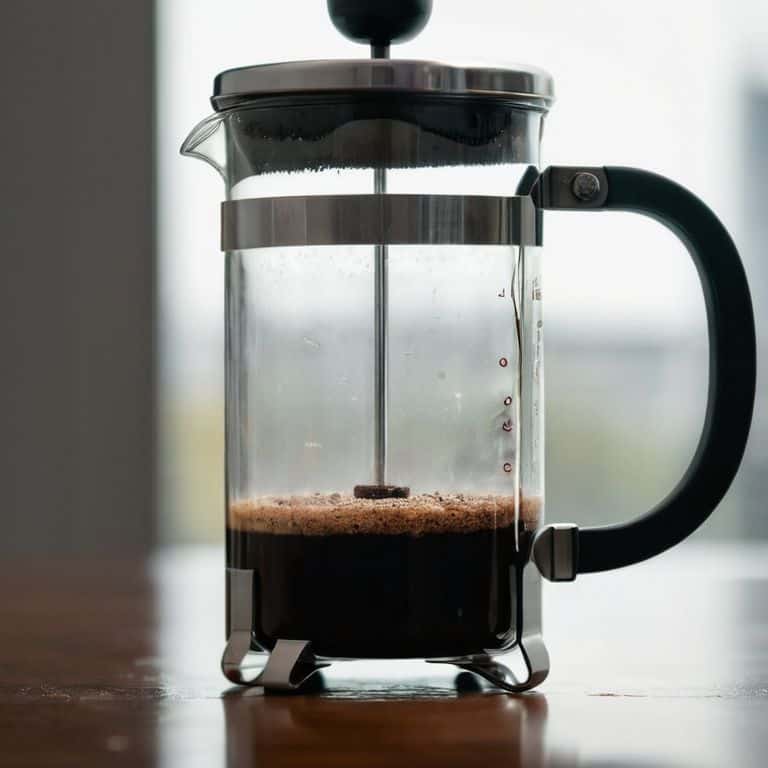I still remember the first time I tasted a coffee that made my eyes widen – it was a Kenyan AA with an acidity that cut through the richness like a hot knife through butter. But when I started digging into what makes coffee tick, I was bombarded with overcomplicated explanations of what is acidity in coffee. It seemed like every “expert” had a different take, and none of them seemed to care about the actual experience of drinking the stuff. As someone who’s spent years perfecting their craft, I can tell you that the real story of acidity is far more fascinating – and accessible – than the hype would have you believe.
As a barista trainer and coffee consultant, I’ve seen my fair share of confused looks when the topic of acidity comes up. So, let’s make a deal: I’ll cut through the noise and give you the lowdown on acidity in a way that’s easy to grasp, without sacrificing any of the nuance that makes coffee so captivating. I’ll share my own experiences, from experimenting with water chemistry to tasting the difference in brew water, to help you understand what acidity really means for your daily cup. My goal is to empower you with the knowledge to navigate the world of coffee with confidence, and to appreciate the subtle dance of flavors that makes a great cup truly unforgettable.
Table of Contents
What Is Acidity in Coffee

When I’m judging coffee competitions, I’m always on the lookout for that perfect balance of flavor notes. You see, coffee acidity scale is a crucial factor in determining the overall taste experience. It’s what sets apart a good cup from a great one. I’ve spent years experimenting with different coffee bean acidity levels, and I can tell you that it’s not just about the type of bean – it’s also about the roast level.
As a barista trainer, I always emphasize the importance of understanding how to reduce acidity in coffee. It’s not about eliminating it entirely, but rather finding that sweet spot where the acidity complements the other flavors. I’ve found that certain coffee brewing methods can bring out the best in a coffee’s acidity. For instance, pour-overs tend to accentuate the bright, citrusy notes, while French press can mellow out the acidity.
In my experience, the key to mastering acidity in coffee is to experiment and find what works best for you. Whether you’re a fan of bright, acidic coffees or prefer a smoother cup, understanding the role of acidity in coffee roast levels is essential. By paying attention to the acidity and flavor notes, you can unlock a whole new world of flavors and take your coffee game to the next level.
Bean There Done That Coffee Bean Acidity Levels
When it comes to coffee beans, acidity levels can vary greatly depending on factors like region, altitude, and processing methods. I’ve found that beans from East African countries like Ethiopia and Kenya tend to have a brighter, more vibrant acidity, while those from South America can have a smoother, more balanced flavor profile.
In my experience, understanding the acidity level of a particular coffee bean is crucial in determining the optimal roast level and brewing method. A key factor to consider is the bean’s inherent acidity, as it can greatly impact the overall flavor of the cup.
Measuring the Pucker Coffee Acidity Scale
When it comes to measuring acidity in coffee, we use the coffee acidity scale, which helps us understand the level of acidity in a particular coffee. This scale is crucial in determining the flavor profile of a coffee, as it can range from low to high acidity.
To precisely measure acidity, coffee professionals rely on sensory evaluation, using their senses to detect the acidity level in a coffee.
Taming the Acid

To tame the acid, you need to understand how different factors influence the acidity in your cup. One key aspect is the coffee acidity scale, which helps you measure and adjust the acidity levels to your liking. By experimenting with various coffee bean acidity levels, you can find the perfect balance for your taste buds.
When it comes to reducing acidity in coffee, the roast level plays a significant role. Darker roasts tend to have lower acidity, while lighter roasts preserve more of the coffee’s natural acidity. This is because the roasting process affects the acidity in coffee roast levels, with lighter roasts showcasing more of the coffee’s inherent characteristics.
By mastering coffee brewing methods and acidity, you can further refine the flavor profile of your coffee. For instance, pour-over and French press methods can accentuate the acidity, while methods like Turkish coffee or espresso can produce a more balanced flavor. Understanding how these methods interact with the coffee’s natural flavor notes is crucial for achieving the perfect cup.
Brewing Up Balance Coffee Brewing Methods and Acidity
When it comes to brewing, the method can greatly impact the acidity of your coffee. I’ve found that pour-over and drip brewing tend to accentuate the bright, acidic notes in a coffee, while immersion brewing methods like French press can mute them. This is because the water has more contact time with the grounds in immersion brewing, which can extract more of the coffee’s solids and balance out the acidity.
To achieve a balanced cup, I aim for a precise brew temperature between 195°F and 205°F. This allows the optimal extraction of the coffee’s flavors, including its acidity. By controlling the brew temperature, I can bring out the unique characteristics of each coffee bean and create a harmonious balance of flavors in the cup.
Roast Brew Repeat Acidity in Coffee Roast Levels
When it comes to acidity in coffee, the roast level plays a significant role. I’ve found that lighter roasts tend to preserve more of the coffee’s natural acidity, resulting in a brighter, more vibrant flavor. This is because lighter roasts have a shorter roasting time, which helps to retain the coffee’s inherent characteristics.
As I experiment with different roast levels, I’ve noticed that balanced acidity is key to a great cup. Medium to medium-dark roasts can bring out a smoother, more balanced acidity, while darker roasts can sometimes mask it altogether. By understanding how roast levels impact acidity, home baristas can better navigate the nuances of coffee flavor and create a cup that’s tailored to their taste.
Acidity Hacks: 5 Tips to Tame the Beast
- Experiment with water chemistry to find the perfect balance for your coffee, as mineral levels can greatly impact acidity perception
- Invest in a quality coffee scale to measure your coffee and water with precision, ensuring consistent results and optimal acidity levels
- Play with roast levels to find your sweet spot – lighter roasts tend to be more acidic, while darker roasts can be smoother, but may lack brightness
- Adjust your grind size and brewing time to suit the specific coffee you’re working with, as these factors can greatly impact the final acidity of your cup
- Keep a coffee journal to track your progress, note your preferences, and refine your technique – the pursuit of the perfect cup is a journey, not a destination
Acidity in Coffee: 3 Key Takeaways
I’ve found that understanding acidity is all about embracing the nuances of coffee, from the bean’s inherent characteristics to the roast level and brewing method, to ultimately find that perfect balance that makes your coffee sing
By recognizing that acidity is not just a concept, but a tangible, taste-bud-tingling sensation, you’ll be empowered to experiment and adjust your coffee game, whether you’re a seasoned barista or a curious home brewer
Remember, the quest for the ideal acidity is a journey, not a destination – it’s about tuning into the subtleties of your coffee, being mindful of the interplay between flavors, and continually refining your techniques to unlock the full potential of your brew
The Heart of the Matter
Acidity in coffee is not just a sensation, it’s the spark that sets the flavor ablaze – it’s what transforms a mere drink into an unforgettable experience.
Julian Vale
The Acidity Awakening

As we’ve explored the fascinating world of acidity in coffee, it’s clear that understanding its role is crucial for any coffee enthusiast. From the coffee acidity scale to the impact of roast levels and brewing methods, there’s a delicate balance to strike in order to bring out the best in your cup. Whether you’re a fan of bright, snappy coffees or prefer a smoother, more balanced taste, recognizing the importance of acidity is the first step towards elevating your coffee game. By grasping how different factors influence acidity, you’ll be better equipped to navigate the vast landscape of coffee flavors and find your perfect blend.
So, the next time you sip on a cup, remember that acidity is not just a characteristic – it’s an experience. It’s the spark that sets the flavor alive, the kiss of acidity that makes your taste buds dance. As you continue on your coffee journey, don’t be afraid to experiment, to push the boundaries of what you thought was possible. For in the world of coffee, acidity is not just a concept – it’s a * doorway to discovery*, waiting to be explored, one delicious cup at a time.
Frequently Asked Questions
How can I balance acidity in my coffee without losing its unique flavor profile?
To balance acidity without sacrificing flavor, I swear by adjusting brew temperature and water chemistry. Try tweaking your temp between 195°F and 205°F, and experiment with filtered water to reduce mineral content. This will help tame the brightness without flattening the flavor profile, allowing your coffee’s unique character to shine through.
What are some common mistakes to avoid when trying to adjust the acidity of my coffee at home?
When tweaking acidity at home, beware of over-extraction and using water that’s too hot or too cold. Also, don’t over-roast your beans, as this can mute acidity. And, please, for the love of coffee, use fresh, high-quality beans – it makes all the difference in achieving that perfect balance of acidity and flavor.
Can the water I use to brew my coffee really affect its acidity, and if so, how do I optimize my water chemistry for the best taste?
Water chemistry is a game-changer for acidity. I’m obsessed with tweaking my brew water’s pH, alkalinity, and mineral content to bring out the perfect balance. For optimal taste, aim for water with a pH between 6.5 and 7.5 and a total dissolved solids (TDS) level between 100 and 200 mg/L – trust me, it makes a world of difference.



